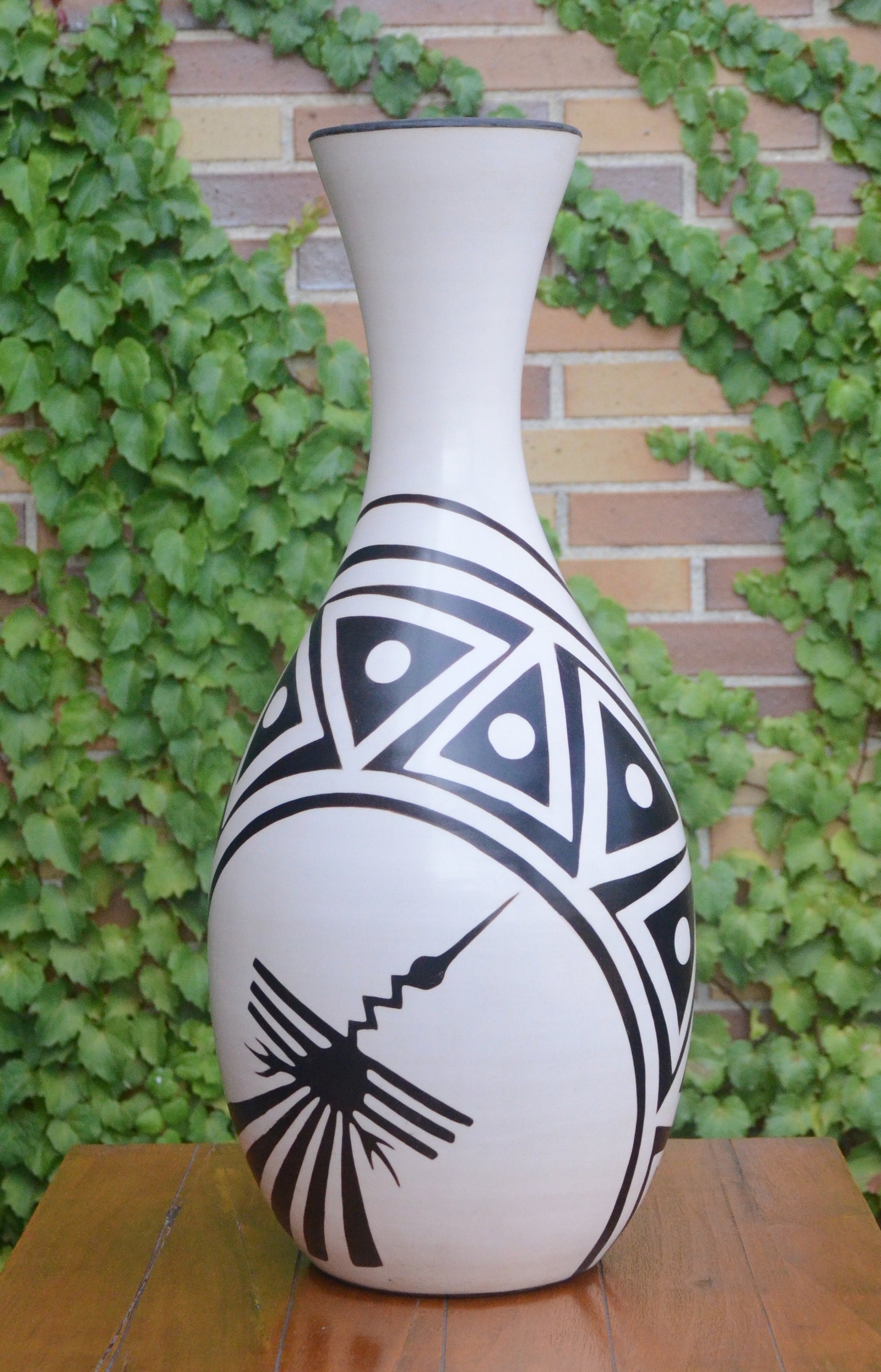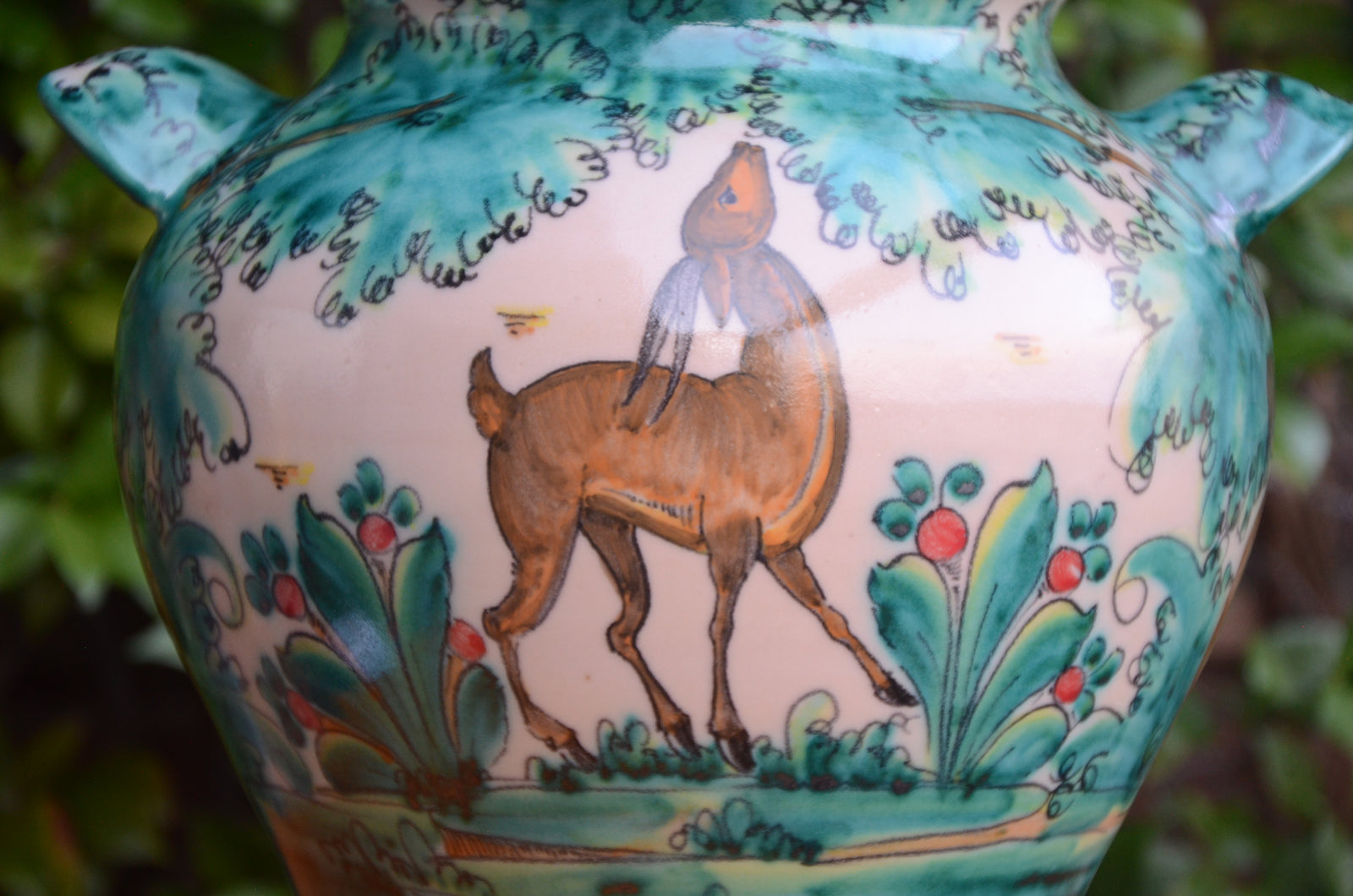
The northern Peruvian city of Chulucanas is an artisan centre close to the regional capital Piura, which gives name to this kind of ceramics. Piura was the first city founded by the Castilian Francisco Pizarro on his conquest.
The very fine Chulucana ceramic work is worldwide known and has the roots on the Vicús culture.

Everything relative to this culture took Peruvian archaeologist by surprise; the discovery at the end of the 1950’s changed the previous vision about the Old Peru: this culture happened to surpass the art and technological achievements of most of the pre Inca cultures known until then. This is one of the finest and most delicate ceramic styles in Peru. Until now it remains as one of the less known old Andean cultures, and in fact is one of the key cultures to understand the interactions between the central and southern Pre Hispanic societies. It had an active role in the development of the very active regional transit, confluence and articulation of the north of Peru and south of Ecuador, as well as to understand the native basis of the current Peruvian culture.
Comments will be approved before showing up.

